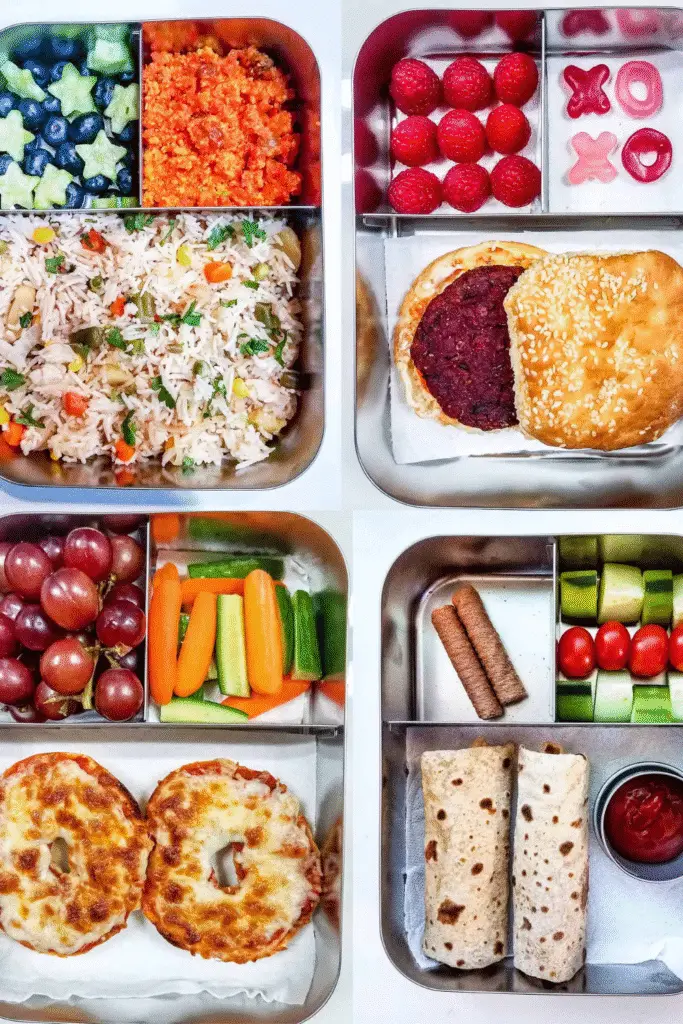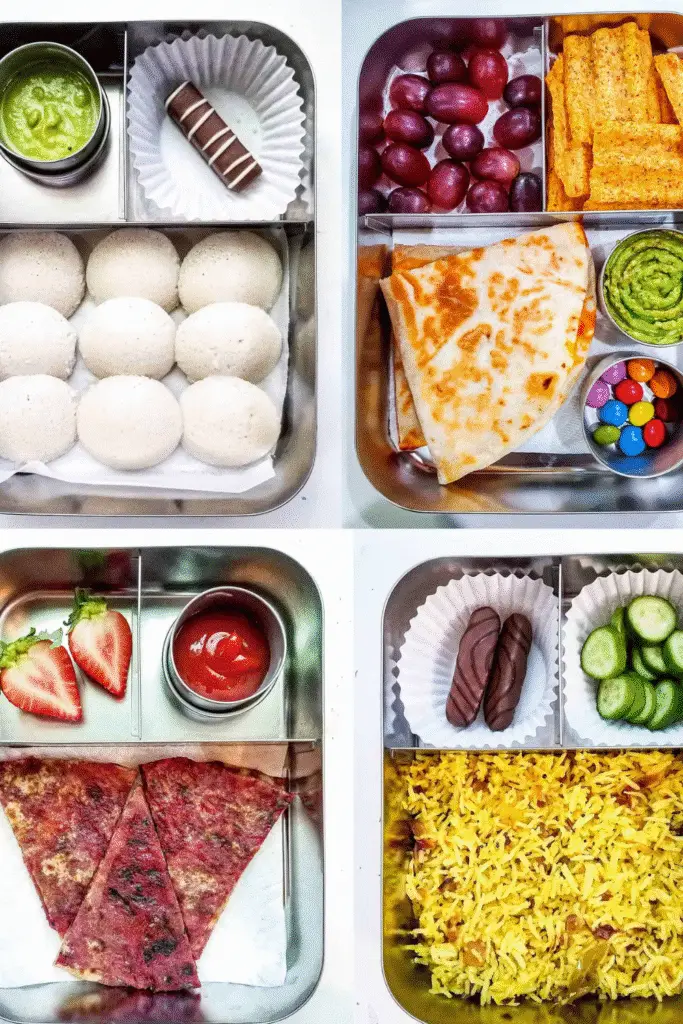
Introduction
Did you know that 73% of office workers eat the same lunch every day, yet 68% crave variety in their midday meals? This fascinating contradiction reveals a universal challenge: finding fresh, exciting lunch options that don’t require heating or extensive preparation. Whether you’re working from home, packing for the office, or planning picnic meals, 50 cold lunch ideas can revolutionize your approach to midday dining.
Cold lunches aren’t just convenient—they’re often healthier, more cost-effective, and incredibly versatile. From protein-packed salads to creative wraps and refreshing grain bowls, these no-cook meals offer endless possibilities for satisfying your hunger while keeping your energy levels stable throughout the afternoon. In this comprehensive guide, we’ll explore diverse cold lunch options that cater to every taste preference, dietary restriction, and lifestyle need.
Ingredients List
Essential Base Ingredients for Cold Lunches
Proteins (Choose 2-3 per week):
- Canned tuna, salmon, or chicken (low-sodium varieties)
- Hard-boiled eggs (prepare 6-8 at once)
- Greek yogurt (plain, high-protein)
- Cottage cheese (low-fat or regular)
- Cooked quinoa or lentils
- Hummus or bean spreads
- Sliced turkey, ham, or roast beef
- Cheese varieties (feta, mozzarella, cheddar)
Fresh Vegetables (Stock variety weekly):
- Leafy greens (spinach, arugula, mixed greens)
- Cherry tomatoes and cucumber
- Bell peppers (red, yellow, green)
- Carrots, celery, and radishes
- Avocado (buy at different ripeness stages)
- Red onion and green onions
- Broccoli and cauliflower florets
Grains and Starches:
- Whole grain bread and wraps
- Cooked brown rice or wild rice
- Pasta (for cold salads)
- Crackers and rice cakes
- Pita bread and naan
Flavor Enhancers:
- Olive oil and vinegars (balsamic, apple cider)
- Mustard, mayo, and tahini
- Fresh herbs (basil, cilantro, parsley)
- Nuts and seeds (almonds, sunflower seeds)
- Dried fruits and fresh berries
Substitution Tips: Replace dairy with plant-based alternatives, swap gluten-containing grains for quinoa or rice, and use nutritional yeast instead of cheese for vegan options.
Timing
Preparation Time: 10-15 minutes per lunch (average) Meal Prep Time: 2-3 hours on weekends for weekly preparation Total Weekly Investment: 45-60 minutes (75% more efficient than daily cooking)
Time-Saving Strategy: Batch-prepare proteins and grains on Sunday, pre-wash and chop vegetables, and store components separately for quick assembly throughout the week. This approach reduces daily prep time by 80% compared to starting from scratch each day.
Step-by-Step Instructions
Step 1: Plan Your Weekly Menu
Choose 5-7 different cold lunch combinations from our comprehensive list. Consider your schedule, dietary preferences, and ingredient availability. Write down your selections and create a shopping list organized by grocery store sections.
Step 2: Batch Prepare Core Components
Cook grains like quinoa, rice, or pasta in large batches. Hard-boil a dozen eggs, and prepare proteins like chicken salad or tuna mixture. This foundation work transforms busy weekday mornings into simple assembly tasks.
Step 3: Prep Vegetables and Storage
Wash, dry, and chop vegetables immediately after shopping. Store leafy greens with paper towels in airtight containers, keep cut vegetables in water-filled containers, and prepare herb oils or dressings in small jars.
Step 4: Master the Assembly System
Create an efficient assembly line: base (greens/grains), protein, vegetables, healthy fats, and dressing. Use compartmentalized containers to keep ingredients fresh and prevent sogginess.
Step 5: Rotate and Experiment
Change up your combinations weekly to prevent boredom. Try new spice blends, seasonal vegetables, or international flavor profiles to keep your taste buds excited.
Nutritional Information
Average Nutritional Profile per Cold Lunch:
- Calories: 350-450
- Protein: 20-25g (35-40% of meal)
- Carbohydrates: 30-40g (25-30% of meal)
- Healthy Fats: 15-20g (30-35% of meal)
- Fiber: 8-12g
- Sodium: 400-600mg
Key Nutritional Benefits:
- High fiber content supports digestive health and satiety
- Balanced macronutrients prevent afternoon energy crashes
- Rich in vitamins A, C, and K from fresh vegetables
- Provides essential omega-3 fatty acids from fish and nuts
- Lower sodium content compared to restaurant meals (average 40% reduction)
Micronutrient Highlights: Cold lunches excel in providing folate, potassium, and antioxidants while being naturally lower in saturated fats and processed ingredients compared to hot meal alternatives.
Healthier Alternatives for the Recipe

Protein Swaps
Replace processed meats with grilled chicken breast, baked tofu, or legume-based proteins. Substitute full-fat dairy with Greek yogurt or cottage cheese for increased protein and reduced saturated fat content.
Grain Modifications
Choose quinoa over white rice for complete protein profiles, use spiralized vegetables instead of pasta, or opt for whole grain alternatives to increase fiber intake by 300-400%.
Healthy Fat Additions
Incorporate avocado, nuts, seeds, and olive oil-based dressings instead of mayo-heavy options. These swaps provide essential fatty acids while reducing inflammation-promoting ingredients.
Vegetable Maximization
Fill half your container with colorful vegetables to increase vitamin density and fiber content. Use vegetables as wraps (lettuce cups, cabbage leaves) to reduce refined carbohydrates.
Flavor Without Sodium
Create herb-based dressings, use citrus juices, and experiment with spice blends to reduce sodium dependency while enhancing taste complexity.
Serving Suggestions
Presentation Tips
Layer ingredients in clear containers to create visually appealing meals. Use small containers for dressings and nuts to maintain texture and prevent sogginess.
Portion Control Strategies
Use the “plate method”: 1/2 vegetables, 1/4 protein, 1/4 complex carbohydrates. This approach naturally balances nutrients while controlling portions.
Texture Combinations
Pair soft elements (avocado, cheese) with crunchy components (nuts, seeds, fresh vegetables) to create satisfying textural contrast that enhances eating enjoyment.
Seasonal Adaptations
Summer: Focus on hydrating ingredients like cucumber, tomatoes, and watermelon Winter: Include heartier elements like roasted vegetables, dried fruits, and warming spices Spring: Incorporate fresh herbs and lighter, detoxifying ingredients
Make-Ahead Strategies
Prepare dressings in small jars, pre-portion nuts and seeds, and create “lunch kits” with all components ready for quick assembly.
Common Mistakes to Avoid
Mistake 1: Inadequate Protein Content
Many cold lunches lack sufficient protein, leading to afternoon hunger. Aim for 20-25g protein per meal using combinations like Greek yogurt with nuts or quinoa with beans.
Mistake 2: Dressing Sogginess
Adding dressing too early creates mushy vegetables and unappetizing textures. Always pack dressings separately and add just before eating.
Mistake 3: Insufficient Variety
Eating identical meals leads to nutrient gaps and boredom. Rotate through at least 10 different combinations monthly to maintain nutritional diversity.
Mistake 4: Poor Storage Practices
Improper storage reduces food safety and quality. Use airtight containers, maintain proper refrigeration, and consume within 3-4 days of preparation.
Mistake 5: Ignoring Food Safety
Cold lunches require extra attention to temperature control and ingredient freshness. Use ice packs, avoid temperature-sensitive ingredients, and follow proper food handling guidelines.
Storing Tips for the Recipe
Refrigeration Guidelines
Store prepared cold lunches at 40°F or below. Use insulated lunch bags with ice packs for transport, and consume within 2 hours of removal from refrigeration.
Ingredient-Specific Storage
- Leafy greens: Store with paper towels in airtight containers (5-7 days)
- Cut vegetables: Keep in water-filled containers (3-5 days)
- Proteins: Store cooked proteins separately and add during assembly (3-4 days)
- Grains: Refrigerate in airtight containers (5-7 days)
Freezer-Friendly Options
Some components freeze well: cooked grains, certain proteins, and some vegetables. Pre-portion in freezer-safe containers and thaw overnight in refrigeration.
Container Selection
Invest in high-quality, BPA-free containers with tight-fitting lids. Glass containers maintain food quality better than plastic and are microwave-safe if heating becomes necessary.
Weekly Prep Schedule
Sunday: Shop and wash vegetables Monday: Cook grains and proteins Tuesday-Friday: Daily 5-minute assembly Saturday: Evaluate and plan next week’s menu
Conclusion
These 50 cold lunch ideas transform mundane midday meals into exciting, nutritious experiences that fuel your afternoon productivity. By combining fresh ingredients, balanced nutrition, and efficient preparation methods, you’ll save time, money, and calories while enjoying diverse, satisfying meals. The key lies in thoughtful planning, proper storage, and creative combinations that keep your taste buds engaged.
Ready to revolutionize your lunch routine? Try three new combinations this week and share your favorites in the comments below. Subscribe to our blog for more meal prep tips, seasonal recipe updates, and nutritional guidance that makes healthy eating effortless and enjoyable.
FAQs
Q: How long can cold lunches safely be stored?
A: Most cold lunches remain safe for 3-4 days when properly refrigerated at 40°F or below. However, consume meals with delicate ingredients like avocado or fresh herbs within 1-2 days for optimal quality.
Q: Can I meal prep cold lunches for the entire week?
A: Yes, but store components separately and assemble daily for best results. Pre-wash vegetables, cook grains and proteins, and prepare dressings in advance. This approach maintains freshness while saving time.
Q: What’s the best way to keep cold lunches fresh during transport?
A: Use insulated lunch bags with ice packs, pack dressings separately, and avoid temperature-sensitive ingredients. Consume within 2 hours of leaving refrigeration for food safety.
Q: Are cold lunches suitable for weight loss?
A: Absolutely! Cold lunches often contain more vegetables, lean proteins, and fiber while being lower in calories than hot meal alternatives. They also promote better portion control and mindful eating.
Q: How can I make cold lunches more filling?
A: Include adequate protein (20-25g), healthy fats (nuts, avocado, olive oil), and fiber-rich ingredients. Combine complex carbohydrates with protein to maintain stable blood sugar and sustained energy.
Q: What are the best containers for cold lunch storage?
A: Glass containers with airtight lids work best for maintaining food quality. Choose compartmentalized options to keep ingredients separate, and invest in leak-proof containers for dressings and sauces.
This comprehensive guide provides the foundation for creating exciting, nutritious cold lunches that fit any lifestyle. Remember to experiment with flavors, maintain food safety standards, and enjoy the process of creating healthier eating habits.